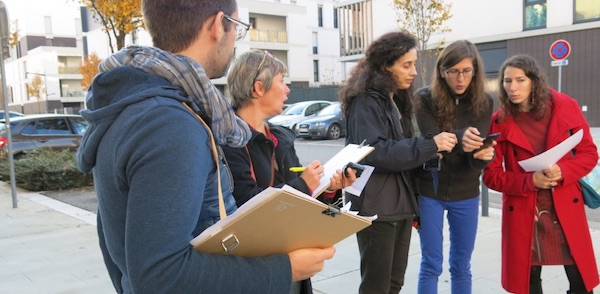Foreword
Whether they're working to promote access to employment, protect the environment or combat discrimination and exclusion, associations rely heavily on digital technology: to communicate with association members, interact with volunteers, mobilize the public and raise funds, and take their initiatives to a wider scale.
In 2016, 73% of associations surveyed had their own website, and 62% were using social networks. 2018 had seen the launch of a national digital training plan for associations and the launch of the OpenAsso collaborative platform, a tool at the service of associations. (See Associative sector: new initiatives and resources to take better advantage of digital).
In 2020, the health crisis marked a turning point for the associative world: 73% of associations were forced to rethink their operations. Remote working and videoconferencing enabled many associations to maintain their activities. Two-thirds of association volunteers had taken up tele-volunteering. (see Le numérique bouscule et transforme le secteur associatif).
According to the latest Recherches & Solidarités survey on the place of digital technology in the associative project, the digital transformation of the associative sector is continuing, with difficulties slightly receding, but still present.
Although 41% of associations use open-source software, the question of how associations can emancipate themselves from the big platforms and digital giants continues to fuel lively debate within the associative world.
The associative world must also rise to the data challenge, with the emergence of functions organized explicitly around data processing and protection: data practices that need to be seen in the context of the long history of experimentation by professionals from the associative or popular education fields.
68% of association members use digital tools
The 2023 edition of the Digital Barometer introduced a question on the use of digital technology in associative life.
In total, 68% of association members use digital tools in this context. When grouping together people who use these tools regularly (every day or at least once a week) as part of their associative activity, Credoc notes that the use of digital tools decreases with age. For example, 73% of 18-24 year-olds use these tools, whereas the figure is three times lower for those aged 70 and over. The same applies to low-income earners (54%). Higher education graduates (49%), executives (54%) and residents of the Paris metropolitan area (53%) also stand out in this respect.
Référence :
Digital tools and uses for associations: difficulties slightly down but still present
Every three years, the associative network of experts Recherches & Solidarités draws up a report on the place of digital technology in associative projects. This 4th edition is based on the direct testimonies of 2,776 associative managers.
Unequal digital maturity by business sector and size
A majority of managers (53%) consider that their association is well on the way in its digital practices. The remainder are equally divided between those who feel their association is still a long way off (22%) and those who feel it has enough experience (21%).
Associations whose managers consider them "experienced" are proportionally more numerous in the fields of culture, the environment, education and economic services. Conversely, a higher proportion of leisure associations, those with few or no salaried employees, and those located in rural areas or "Quartiers de la Politique de la Ville" (urban policy districts) are judged by their managers to be "little initiated".
Overall, managers' assessment of their organization's maturity has changed very little between 2019 and 2022.
The digital tools most used by associations
As in 2019, two tools come out on top: the website and social networks, external communication tools that meet the primary objective of promoting the association. These two tools are often combined: over 80% of associations have a website and/or are present on social networks.
Videoconferencing tools are now in 3rd place, followed by document sharing and storage tools, which have expanded considerably during the crisis.
Tools such as human resources information systems (HRIS) (to manage payroll, vacations and expense accounts: these are only of interest to employing associations, and more often to those of a certain size), project management tools (potentially of interest to a wide range of associations, but requiring a review of organization and initiation), participative financing platforms, CRM-type network relations tools or task automation tools are at the end of the list, present in less than 10% of associations.
Associations wishing to use digital technology to manage their activities more effectively," observe the authors of the survey, " would have a strong interest in using project management tools or HRIS tools ..... However, implementing such tools requires a real digital transformation of their organization, which impacts different user profiles, work processes/habits, and therefore an initial investment - in time and money - that is much higher".
Digital tools primarily for external and internal communications
The primary objective assigned by associations to their digital tools is to communicate on the actions carried out and publicize the association (this was already the case in 2019), followed by network animation (internal exchanges), management (accounting, member management, monitoring and evaluation of actions...) and collaborative work.
The other objectives (finding volunteers, seeking funding, online AGM and Board of Directors, member services) are shared by less than 30% of associations.
A quarter of associations now organize their general meetings and board meetings online.
The greater the number of employees, the more digital tasks are carried out by a specialist consultant
32% of associations have appointed a dedicated digital "referent", compared with 25% in 2019.
23% of associations have a few initiated people dealing with digital issues, compared with 34% in 2019.
In 21% of cases, it's the Board of Directors or the Executive Committee that's in charge. 10% of associations have set up a " shared digital culture", involving the participation of most of the association's active members.
Only 5% of associations say they have no one in-house to deal with digital issues.
"The more employees an association has, the more digital-related issues are handled by a single referent," observe the authors of the survey. " Having a single referent enables them to centralize information and call on specific skills".
Associations' difficulties with digital technology are declining
24% of associative managers say they have no difficulty at all with digital issues, compared with 16% in 2019. The authors of the survey offer a number of explanations for this: the acceleration of digital practices as a result of the crisis, a wider range of support services in terms of the number of participants, themes and expertise, and an increase in the skills of associative players.
Nearly half of all managers have encountered difficulties of a human nature, linked to technical problems (34%), a lack of financial resources (30%) or strategic issues (24%).
Human and financial difficulties have declined since 2019. The authors of the survey see in this evolution the effects of the health crisis:
- Discover free or low-cost tools
- Greater availability within teams to share skills, train volunteers, review organization and missions;
- A collective awareness of the opportunities offered by digital technology to keep business going during the crisis. " People who have had to take the plunge, by default, are perhaps less reluctant to test new working methods, to invest in the subject, even among the most reluctant".
Levers for action to make the most of digital technology
The survey identifies 11 action levers that could help associations make the most of digital.
Nearly half of association managers (47%) would like to know more about existing tools. For some, this may be due to a lack of information about what's on offer in general.
The associations seem to have clearly identified skills as a lever for action: upgrading the least experienced team members (45%) comes in second place, not far behind knowledge of tools.
Around a third of associations (34%) would like to have the financial means to equip themselves. Shared digital solutions to share costs provide a partial response, with only 19% of managers interested.
20% of managers rely on personalized support to define a strategy and action plan.
Référence :
41% of associations use open-source software
The notion of free software " covers strong ethical dimensions, directly linked to the values of the associative sector, by making digital tools a common good" observe the authors of the study devoted to the place of digital technology in associative projects in 2022.
According to the survey carried out by Recherches & Solidarités, 41% of associations surveyed say they use open-source software: a proportion that has remained surprisingly stable since 2016. The use of open-source software increases with the level of digital literacy: it concerns 55% of associations whose managers describe them as "experienced", but only 27% of "little initiated" associations.
Among associations using open-source software, practical motivations outweigh ethical ones. 15% of respondents would be willing to use it, but only if they had support.
Nearly a quarter (24%) see no need for them, or consider that they don't meet their needs. "This figure may reflect a lack of knowledge, or a fear of the associated technical difficulties: self-hosting of solutions, subscription to maintenance contracts or access to community support. Those in the support business can play a real role in supporting and accompanying associations as they reflect on the practical and ethical reasons for using this software, by drawing on the 41% of associations that are convinced and use it, and then guiding them in choosing and implementing this software", comment the authors of the study.
The questions raised in the course of the survey illustrate the extent to which the associative world is concerned by this issue. The manager of an international solidarity association wondered "how to incorporate ethical and ecological considerations into the choice of tools and equipment, and more generally, how to integrate these considerations into the overall strategy of our associative project". A point of view shared by the head of an environmental protection association: "from a strategic point of view, the main problem we encounter, as part of a national network, is consistency in our choice of tools, and in particular, the entryism of GAFAM. When you put digital freedoms at the forefront, as we do, it takes a lot of energy to row against the tide". The head of a local development association notes how "difficult and time-consuming it is to identify digital tools that respect certain associative values (in particular, many digital tools are data vacuum cleaners and are subsequently used for profit), French (or even European) tools that promote the notions of eco-design, GreenIT, low/slow-tech, open-source, usable on/off-line".
Back in 2007, the Association pour la Promotion et la Recherche en Informatique Libre (April) called for "bridges to be built between free software and the associative world". To this end, it published a guide listing working methods and tools adapted to the needs of associations.
Référence :
An initiative to help associations adopt a more ethical digital approach
"Many associations are thinking of leaving the services of the web giants for ethical, free and decentralized alternatives, more in line with their values. But they don't always have the knowledge to embark on this transition alone" ...
This observation led two associations, Animafac, a network of over 4,000 student associations, and Framasoft, the originator of numerous free digital projects, to launch an initiative called Émancip'Asso "to promote the digital emancipation of the associative world, by enabling associations to find support in their digital transition process".
The emancipasso.org website offers
- A directory of service providers trained in the challenges of the associative world
- A self-help community that meets on a forum to exchange best practices, tips and tricks.
- Useful resources for associations and service providers, fed by the community.
Référence :
Associations face the challenge of digital data
The Cahiers de l'action, published by the Institut national de la jeunesse et de l'éducation populaire (INJEP), devotes a special report to the place and uses of data within the associative world: it focuses " on the challenges linked to digital data, by not reducing them to technical problems, but by placing them in a global perspective of digital development in society, and in particular in the associative world".
A first series of contributions shows the evolution of the "digital question" in associations, understood as a fact that has come to impact associative projects, by questioning the ways in which citizens are involved in collective projects (membership, volunteering, contribution logics).
A second series of contributions sheds light on the evolution of professional practices through the affirmation of professions and functions organized explicitly around data.
Read more: Associations face the challenge of digital data
Référence :
How to build and develop the production and use of data by citizens
Jacques-François Marchandise draws on his practical experience and the reflections developed within the Fondation Internet nouvelle génération (FING) to trace the progress made by a number of associations in taking on board the notions of data acculturation, or "data culture".
The challenges of data protection and control changed in the context of the 2010s: " Very quickly, we understood that individual control was linked to much more collective issues in terms of health, the environment and education". At the same time, the opening up of public data became an important issue for local authorities and the State, as well as for associations, who from the early 2010s were in a position to demand access to and reuse of data.
To illustrate his point, the author recalls the emblematic (and already long-standing) case of a citizens' initiative in 2011 aimed at establishing transparency in water pricing: it collected the anonymized bills of 9,000 users to calculate the real price of water.
Jacques-François Marchandise points to a number of difficulties. "Although there is a lot of data available, not everyone can access or use it. We don't know that it exists or where it is; it's often poorly described, stored in unusable formats, and we don't know what to do with it: we've never learned how to handle data sets.
The case of environmental data speaks for itself : "the production of public and private data is already long-standing and rich, with many institutional, scientific and professional bodies sharing a large number of them, and these same players often observe that the uses to which these data are put in society are rather modest, and have relatively few consequences in ecological terms". Biodiversity is one of the fields in which a great deal of data already comes from associations. The Tela Botanica associative network, for example, has been linking a large number of French-speaking professional and amateur botanists for over twenty years, and has contributed to the learning of the PlantNet algorithm, an application developed by major research institutes.
"The author concludes: "Associations can be much more than they are today, social spaces for the construction of our collective mastery of data. "If we are entitled to expect essential data to be made legible by those who produce it, it will often be necessary for associations to become translators themselves, or to enter into co-production with data producers, a path that has been facilitated by collaborative cartographies such as OpenStreetMap". This path of co-production is followed today, for example, by the Institut national de l'information géographique et forestière (IGN) in its "Géocommuns" approach.
Référence :
Two-thirds of French people involved in associations
According to Insee, there are 1.3 million active associations in France, and over 16 million volunteers.
According to a recent survey by the Institut National de la Jeunesse et de l'Éducation Populaire (Injep), in 2021, two-thirds of people aged 16 and over said they had been involved as volunteers, members or donors in an association in the last twelve months.
Volunteering, the gift of time often spontaneously associated with the associative sector, is the most common form of participation, but not the only one: it concerns a quarter of the population. More generally, four out of ten people have participated in an association as a volunteer, activist, volunteer or member.
Half the population has made at least one donation in the last twelve months, often for annual sums of less than €50 (for four-fifths of donors). Seniors (aged 65 and over), who have more free time, are more likely to be volunteers, while younger people (aged 16-24) are more likely to be members, notably because they are more likely to be members of a sports club.
Family heritage - having a family member or close friend involved in an association during adolescence - remains a determining factor. Gender, age, level of income or qualifications, or family configuration have a lesser effect.
Photo credits: Free-Photos / Pixabay - Pixabay License
Référence :









